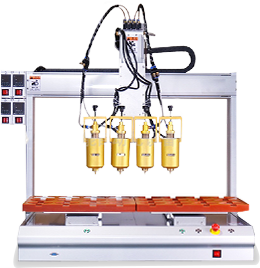

This electronic equipment controls precision parts, made of composite materials such as high-strength alloys and precision ceramics, and is manufactured using nano-level processing technology. As the "nerve hub" of electronic equipment, it integrates multi-channel signal control interfaces and high-precision positioning structures, and is suitable for industrial control systems, smart terminals, and automation equipment. It can accurately transmit control instructions, achieve subtle adjustments to equipment operating parameters (such as motor speed and signal switching), and ensure stable and efficient operation of equipment under complex working conditions. It is a core component for improving the intelligent control level of electronic equipment, helping equipment break through performance boundaries and adapt to multiple scenarios such as Industry 4.0 and smart wearables.
Parameters | 指标
|
Material | Alloy (titanium alloy / aluminum alloy) + precision ceramics |
Dimensional accuracy | ±0.001mm (nano-level processing) |
Signal delay | ≤10ns (high-speed instruction transmission) |
Operating temperature | -50℃ - 180℃ (wide temperature adaptation) |
Lifespan | ≥100,000 cycles (durability test) |
(II) Core features
1. Ultra-precision control: Nano-level processing ensures structural accuracy, and with intelligent control algorithms, the control error of equipment movements (such as robot arm trajectory, screen touch response) is less than 0.01mm, meeting the micro-operation requirements of precision electronic equipment.
2. Multi-scenario adaptation: Compatible with digital/analog signals, supports multiple communication protocols such as SPI and CAN, can be seamlessly connected to industrial computers and consumer electronics motherboards, and is suitable for industrial automation, smart homes, automotive electronics and other fields.
3. Reliable and durable: The composite material has strong anti-interference (electromagnetic shielding efficiency ≥30dB) and environmental resistance. After 1000 hours of salt spray and vibration testing, there is no performance degradation, ensuring long-term stable operation of the equipment.
III. Product details
This part focuses on the control needs of electronic equipment from design to production. In the R&D stage, multi-physics field simulation technology is used to optimize the signal transmission path and mechanical structure to ensure "zero delay and zero error" of control instructions. The production adopts ultra-precision machining center, combined with laser etching and ion implantation processes, to achieve nano-level dimensional accuracy and surface roughness (Ra≤0.05μm). The surface is nitrided to form a dense protective layer to resist wear and corrosion.
In electronic equipment, it can be used as the motion control core of industrial robots to accurately dispatch joint movements; it is used in smart cars to realize sensor signal fusion and actuator control of autonomous driving systems; it is embedded in consumer electronics to optimize touch feedback and equipment power consumption management. Before leaving the factory, it is fully inspected by a three-coordinate measuring instrument and a signal analyzer to simulate extreme working conditions to verify stability. From the precision control of high-end manufacturing to the convenient experience of smart life, this electronic equipment control precision parts are "ultra-precision, adaptive, and reliable", giving electronic equipment a "smart brain" and driving the industry to evolve to a smarter and more efficient level.
 Headquarters tel.
Headquarters tel. E-mail.
E-mail.